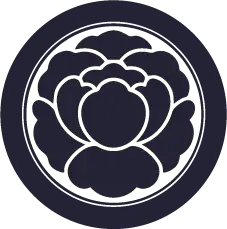On June 18, 2022 Good Old Times flew to London. We checked out the stunning exhibition “Kyōsai: The Israel Goldman Collection” that took place at the Royal Academy of Arts.
Kawanabe Kyōsai was one of the most exciting Japanese painters of the 19th century. We had the pleasure of discovering his work – some of which has never been seen before – in his first UK exhibition in nearly 30 years.
Have fun reading more about it in our blog post! 🙂
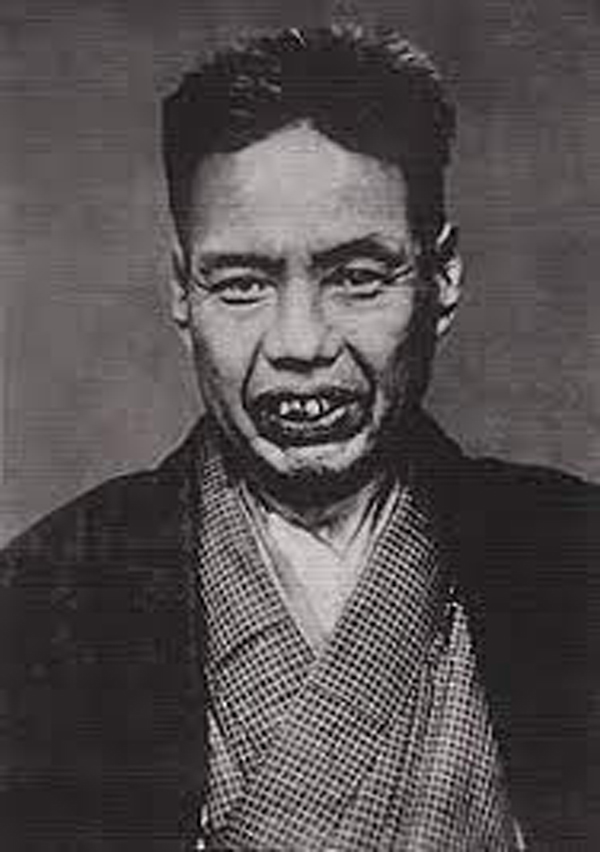
Who was Kawanabe Kyōsai?
Known for his independent spirit, Kawanabe Kyōsai (1831-1889) is among Japan’s most important master painters. Witty, energetic and imaginative, his art continues to influence numerous artistic styles today, from manga to tattoo art.
Particularly compared to his earlier counterparts, Hokusai and Hiroshige, the art world celebrates Kyōsai for his ability to bridge popular culture and traditional art.
Having initially studied under Ukiyo-e artist Kuniyoshi, he combined his subsequent academic training to create his own revolutionary style, creating images from the terrifying and awe-inspiring, to the sweet and endearing.
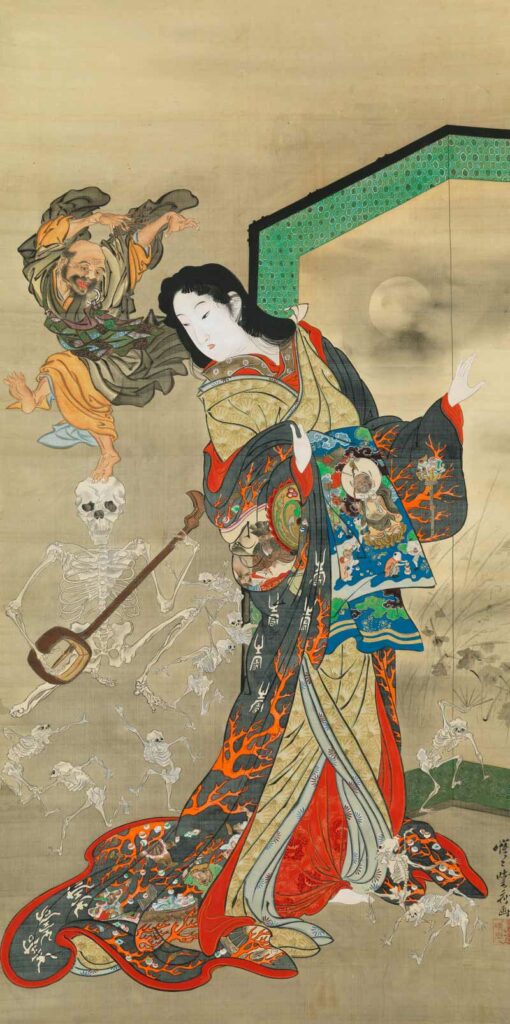
Kyōsai’s artistic career spanned the period after 1868 when Japan reopened to the outside world after its lengthy seclusion. As a result, Kyōsai met many visiting Western artists. He was a colourful character, known for impromptu painting parties fuelled by his daily intake of a litre or two of sake. Although he is known for his expressive brushwork and wicked humour, Kyōsai was classically trained and produced traditional paintings to the highest standard.
Kyōsai’s art is full of bawdy humour, wild parties and animal characters (think acrobatic frogs, sassy cats, monkeys galore). But he also captured Japan at a turning point in the country’s history when – following two centuries of near isolation – the nation opened up to foreigners who brought cannons, treaties and a strange new piece of attire called a top hat.
These cultural shifts and periods of political instability and violence provided ample source material for his art which ranged from painting and woodblock prints, and which continue to inspire artists today, especially those working in manga and tattoo art.
What was Kyōsai’s Japan like?
When Kyōsai died in 1889, the Japan he left behind was a very different place to the country he was born into in 1831.
A political and military administration, the ‘shogunate’, ruled Japan from the 1600s. By the 1830s this hierarchical system was starting to fall apart. In addition to this, in the 1850s Western powers, led by the USA, demanded diplomatic relations with Japan at gunpoint.
These tensions came to a head in 1868 when civil war toppled the administration Kyōsai had grown up under and ushered in the Meiji era. Under the modernising Meiji administration political conflicts continued and newly introduced systems and cultures were often at odds with traditional values, all while Western influence in the country became more pronounced.
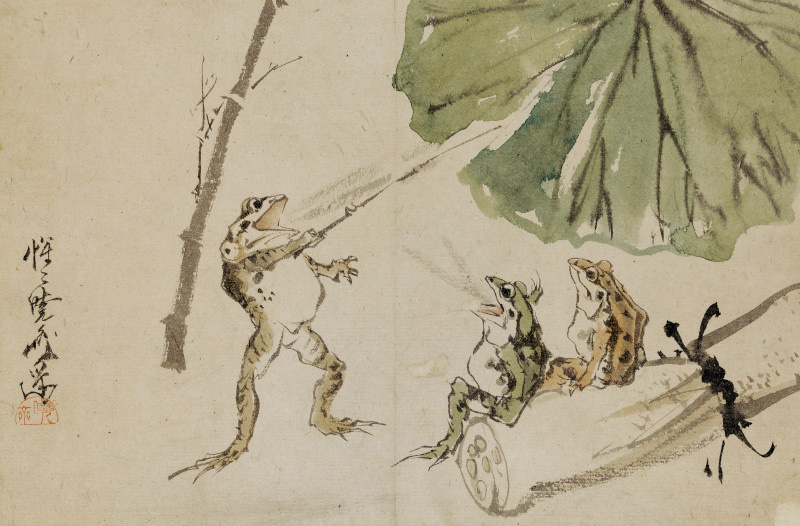
Frog School
Kyōsai liked frogs. The first sketch he did (when he was a young child) was of a frog and the animal seems to have remained a favourite subject ever since, at least partly due to its comic potential.
He often used frogs to depict the lives of ordinary people. In fact there was a large cast of frogs in paintings throughout the exhibition, working as street performers, postal workers and rickshaw drivers, or learning by rote from a lotus-leaf wallchart at a frog school.
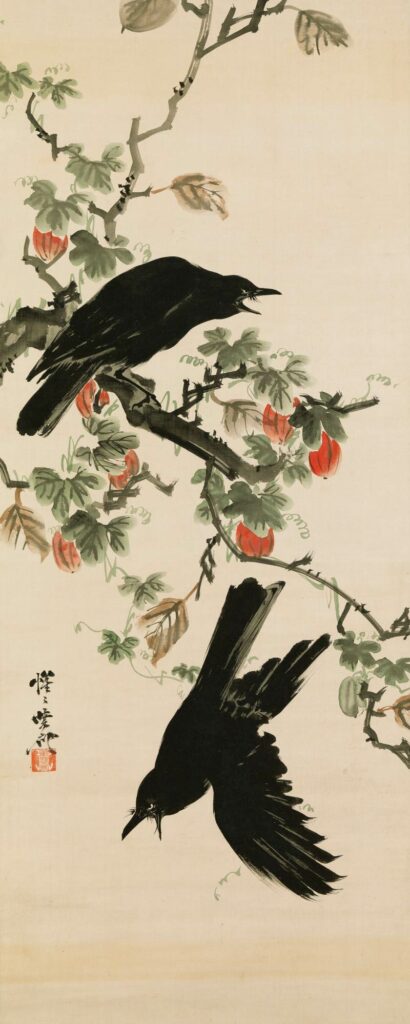
Two Crows with ‘Crow Gourd’
For Kyōsai crows symbolised his success as a painter. In fact one of the paintings that made him famous in Japan was Crows on a Withered Branch. It won him prizes and a collector bought it for the hefty sum of 100 yen.
Furthermore the British architect Josiah Conder sent some of Kyōsai’s crow paintings back to England in the early 1880s. As a result this has led to commissions for similar paintings from all around the world.

Fart Battle
Are those people farting? Yes. They’re having a fart battle.
This subject is older than you might think, dating back to the twelfth century.
Fart battle paintings are a way of caricaturing how ridiculous the human urge to compete is. They’re also a fun comic subject for a witty artist like Kyōsai.
In his fart battle paintings he introduces new ideas to the tradition. Such as ‘firing’ a farter by squeezing their belly with a length of cloth. And also showing the sheer power of a fart by depicting heavy sacks of rice being blown away.
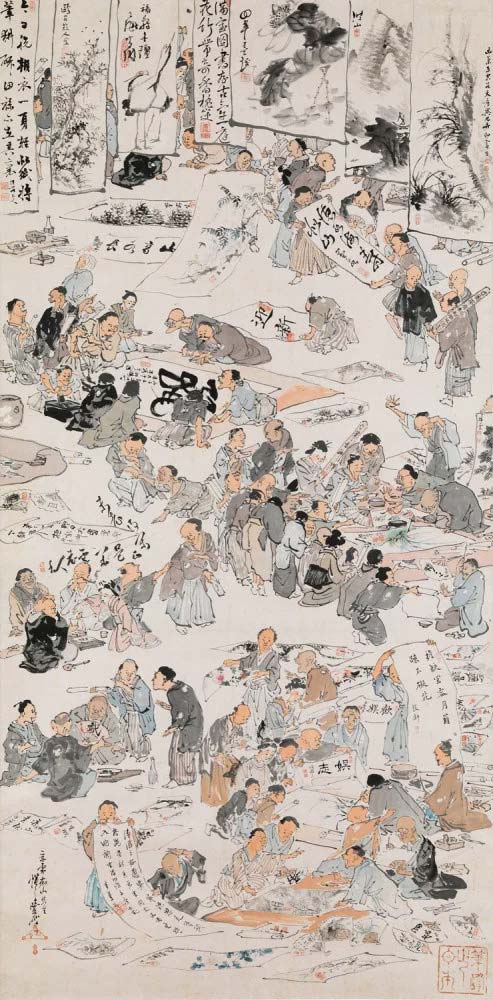
Calligraphy and painting party
A shogakai was a commercially organised ‘painting and calligraphy party’ which celebrated spontaneous, free creativity. These events were as much about the drama of the painting process as the end results. They were often irreverent and drink-fuelled with copious amounts of saké consumed.
Kyōsai was arrested after one particularly raucous shogakai. He served a spell in prison for producing images that insulted the powers of the day.
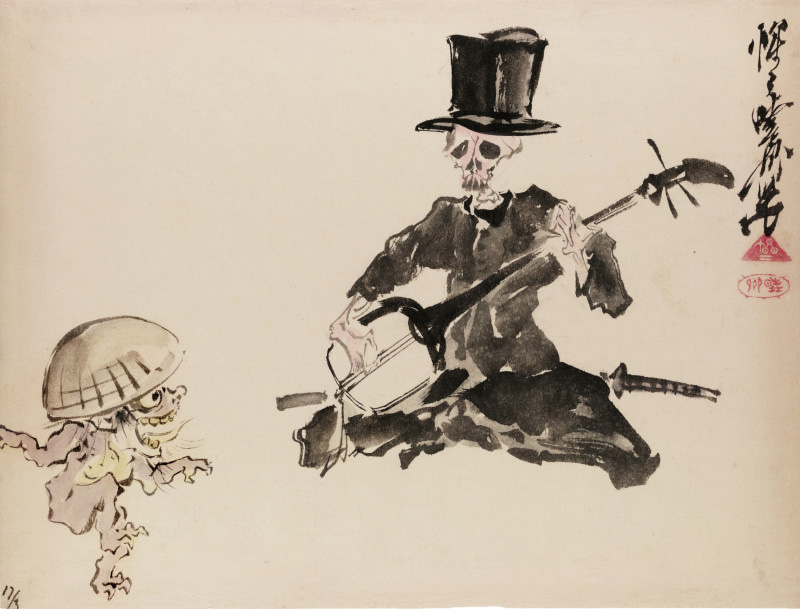
Skeleton Shamisen Player in Top–Hat with Dancing Monster
Kyōsai is likely poking fun at this in Skeleton Shamisen Player in Top Hat with Dancing Monster. But why is that skeleton wearing a top-hat? During Kyōsai’s lifetime Japan underwent a process of Westernisation.
The skeleton in newfangled Western clothing seems to suggest that even when people follow new fads and fashions and put on a different appearance, nothing has changed below the surface.
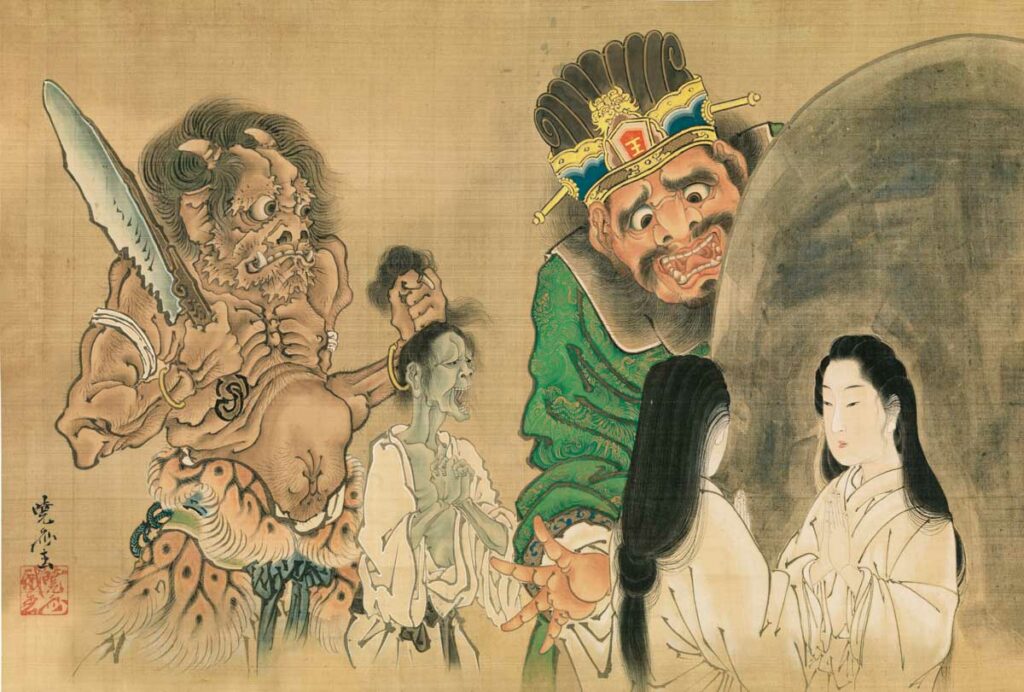
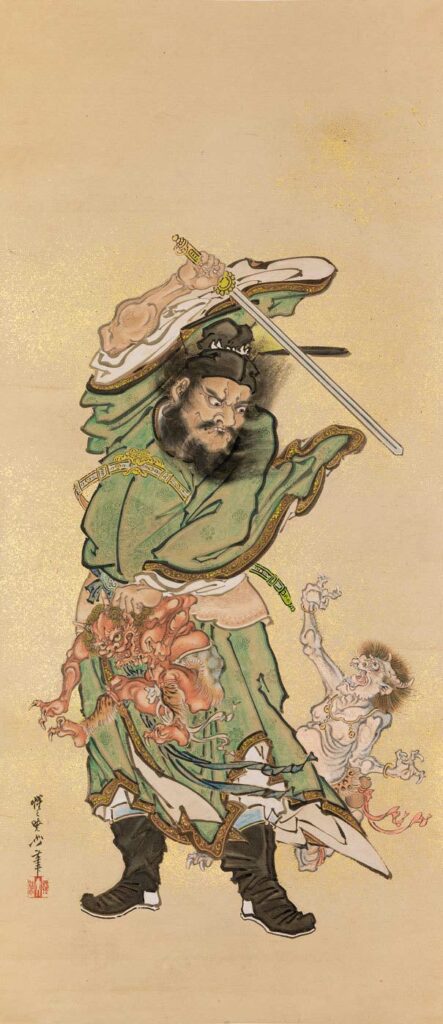
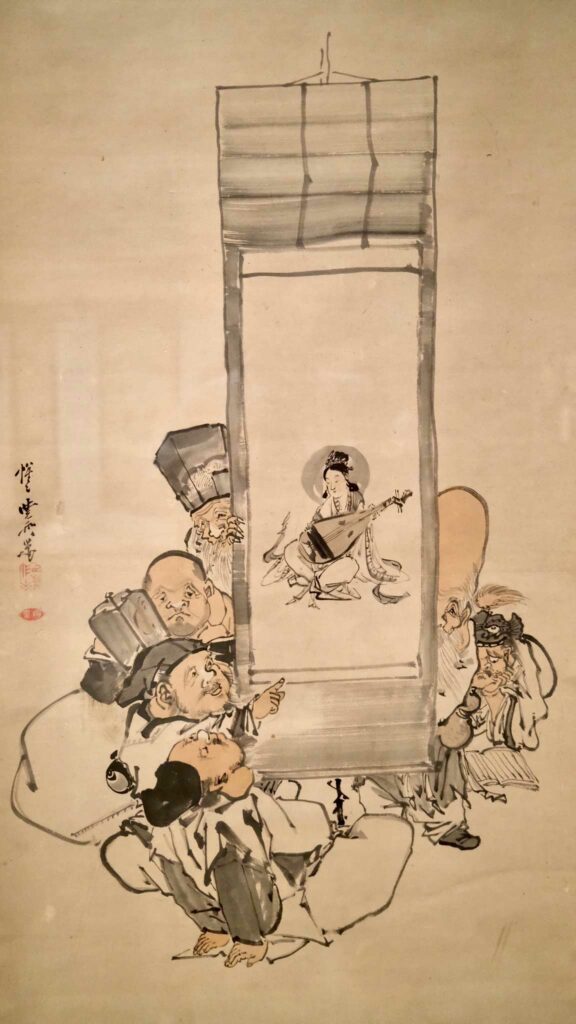
The last painting of the series rapresents the “Six lucky gods, with Benzaiten on a hanging scroll”. If you want to know more about the amazing story of this goddess, read more about it in our blog post.
We hope this blog post has fed your imagination and aroused your curiosity. For any kind of information or if you want to book an appointment, feel free to use our contact form.
We look forward to having you here at Good Old Times Tattoo 😉
Your Good Old Times Tattoo Team

